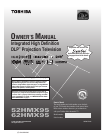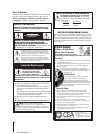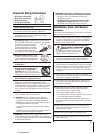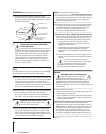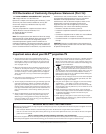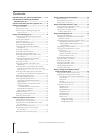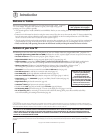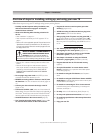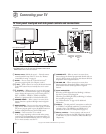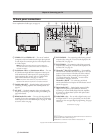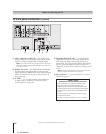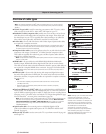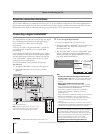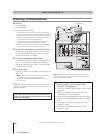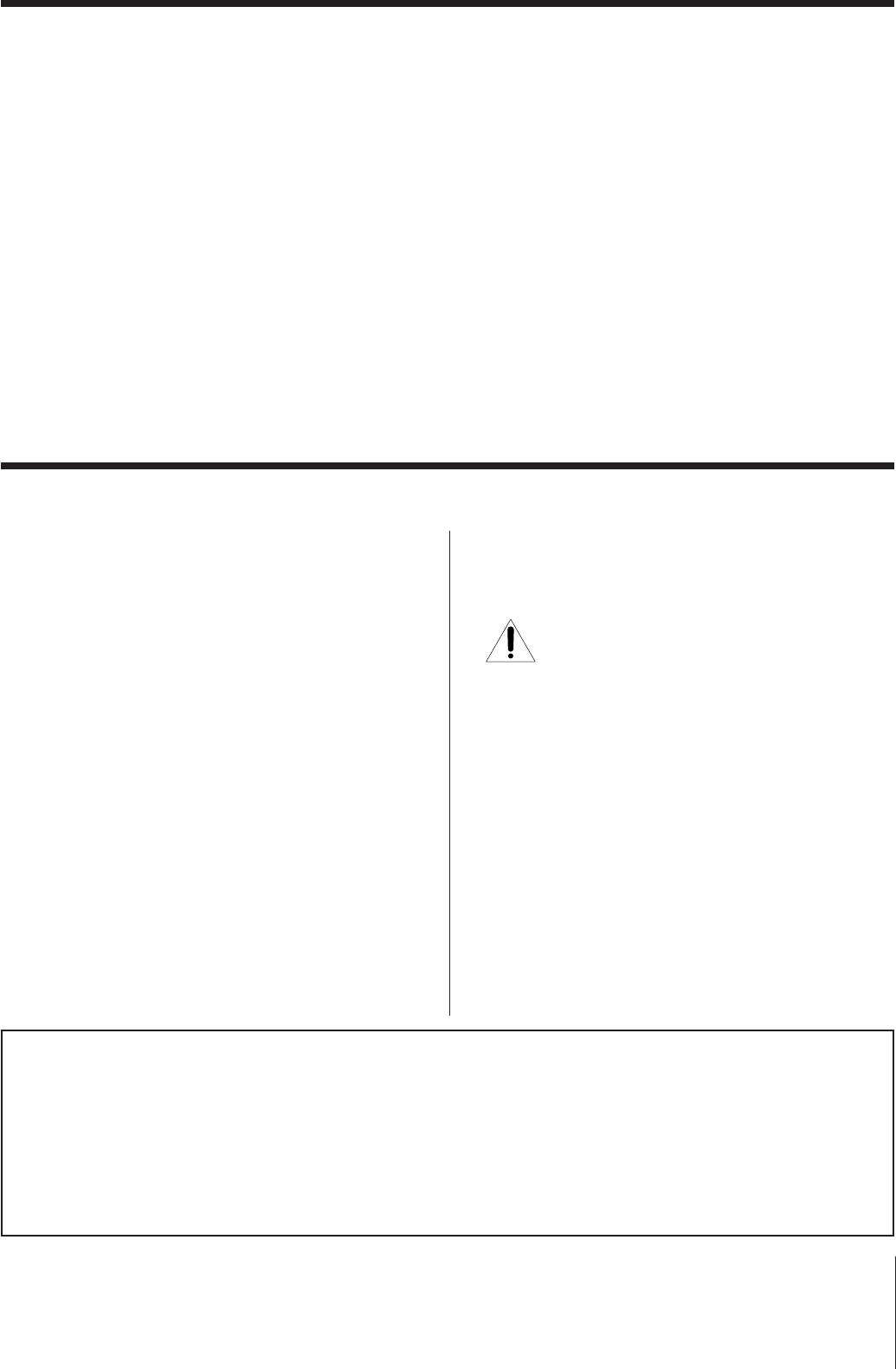
5
Copyright © 2005 TOSHIBA CORPORATION. All rights reserved.
(E) 52/62HMX95
6) Depending on the media you are viewing, it is possible, although
unlikely, that a limited number of viewers may see a “rainbow
effect” on the screen, which can, in rare instances, result in eye
fatigue. This is a rare occurrence related to DLP technology and
is not a sign of TV malfunction.
7) The TV contains several cooling fans to moderate the
internal temperature. You may be able to hear the fans
for several minutes after the TV is powered off. This is
a normal function of the Quick Restart™ feature and is not a sign
of TV malfunction. You can set the Quick Restart™ feature to
stop the fans as soon as the TV is powered off. See “Setting the
Quick Restart™ feature” on page 56.
8) The green and red LED lights on the TV’s front control touchpad
indicate the TV’s current status. If either light flashes, see “LED
indications” on page 125 for details.
9) Every time the TV power cord is plugged in, either the message
“Now Booting...” will display on-screen until the picture
appears, or the green LED will blink until the TV enters standby
mode (plugged in but not powered on). This is normal and is not
a sign of malfunction.
10) When connecting an external A/V device, if you connect the
device’s video output to the TV and the device’s audio output to
a separate audio system, the picture and sound may not
synchronize completely.
11) When playing a video game on the TV, there may be a slight
delay between your command (e.g., joystick, keyboard) and the
picture movement on the screen.
Important notes about your DLP
TM
projection TV
1) The light source for this TV is a projection lamp unit with a
limited service life. When the lamp wears out, the picture may
become dark or black or the lamp may fail, at which time you
must replace the lamp unit. See “Lamp unit replacement and
care” on pages 129–131.
2) When the lamp mode is set to Low Power, every time the TV is
powered on, the lamp will initially be in High Bright mode but
will switch to Low Power mode in approximately 1 minute. You
will notice a change in screen brightness when this happens.
This is normal and is not a sign of malfunction. (See page 80
for details.)
3) Every time the TV is powered on, it may take several minutes for
the picture to obtain full brightness.
4) The TV’s display is manufactured using an extremely high level
of precision technology; however, an occasional pixel (dot of
light) may show constantly on the screen. This is a structural
property of DLP™ (Digital Light Processing™) technology and is
not a sign of malfunction. Such pixels are not visible when the
picture is viewed from a normal viewing distance (see item 5,
below).
5) Always sit approximately 10–25 feet away from the TV and as
directly in front of it as possible. The picture quality may be
affected by your viewing position and length of viewing time.
If you sit too closely to the TV for too long, you may suffer from
eye fatigue. See item 29 on page 4.
FCC Declaration of Conformity Compliance Statement (Part 15):
The Toshiba 52HMX95 and 62HMX95 DLP™ projection
TVs comply with Part 15 of the FCC rules.
Operation is subject to the following two conditions: (1) this
device may not cause harmful interference, and (2) this
device must accept any interference that may cause
undesired operation.
The party responsible for compliance to these rules is:
Toshiba America Consumer Products, L.L.C.
82 Totowa Rd. Wayne, NJ 07470.
Ph: (973) 628-8000
Note: This equipment has been tested and found to comply
with the limits for a Class B digital device, pursuant to Part 15
of the FCC rules. These limits are designed to provide
reasonable protection against harmful interference in a
residential installation. This equipment generates, uses, and
can radiate radio frequency energy and, if not installed and
used in accordance with the instructions, may cause harmful
interference to radio communications. However, there is no
guarantee that interference will not occur in a particular
installation. If this equipment does cause harmful
interference to radio or television reception, which can be
determined by removing and applying power to the
equipment, the user is encouraged to try to correct the
interference by one or more of the following measures:
• Reorient or relocate the receiving antenna.
• Increase the separation between the equipment and the
receiver.
• Connect the equipment into an outlet on a circuit different
from that to which the receiver is connected.
• Consult the dealer or an experienced radio/TV technician
for help.
CAUTION: Changes or modifications to this equipment not
expressly approved by Toshiba could void the user’s authority
to operate this equipment.
IMPORTANT NOTICE ABOUT “HOT LAMP RESTART”
When the TV has been powered on long enough for the lamp unit to get hot, it may take several minutes for the picture to appear on-screen
in the following situations:
• when the Quick Restart™ feature is set to OFF and you turn the TV off and then on again within a few minutes; or
• if the TV is on when a short-term power failure, power surge, or other similar power failure occurs, such that the TV loses and regains
power within a few minutes.
This is a property of DLP TV lamp technology and is NOT a sign of malfunction.
If this occurs, the green LED on the TV front panel will blink (and the red LED will be lit solid) until the TV is finished restarting the lamp and
the normal picture appears. If both LEDs are blinking, you will need to turn the TV off and then on again to restart the lamp.



